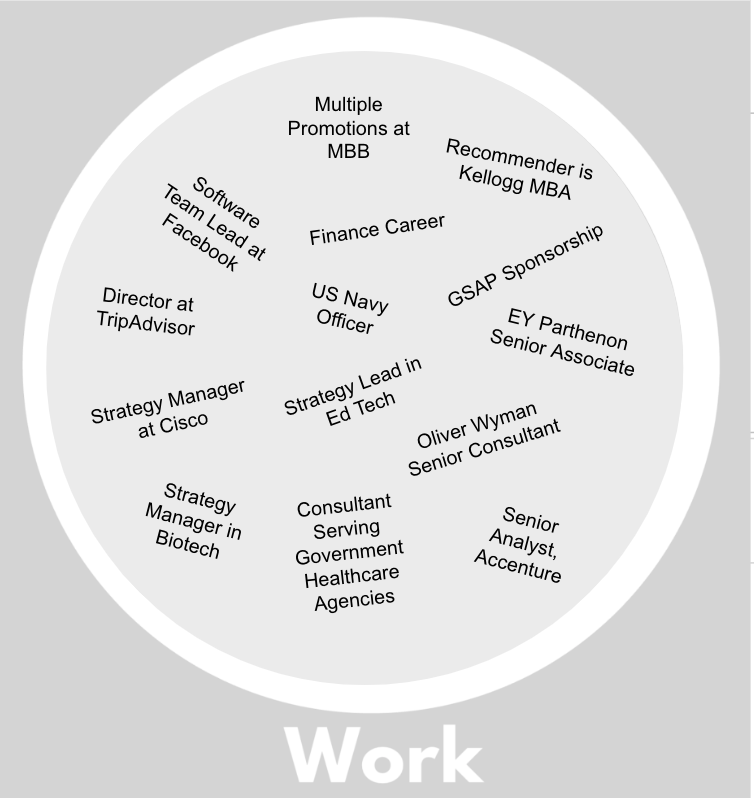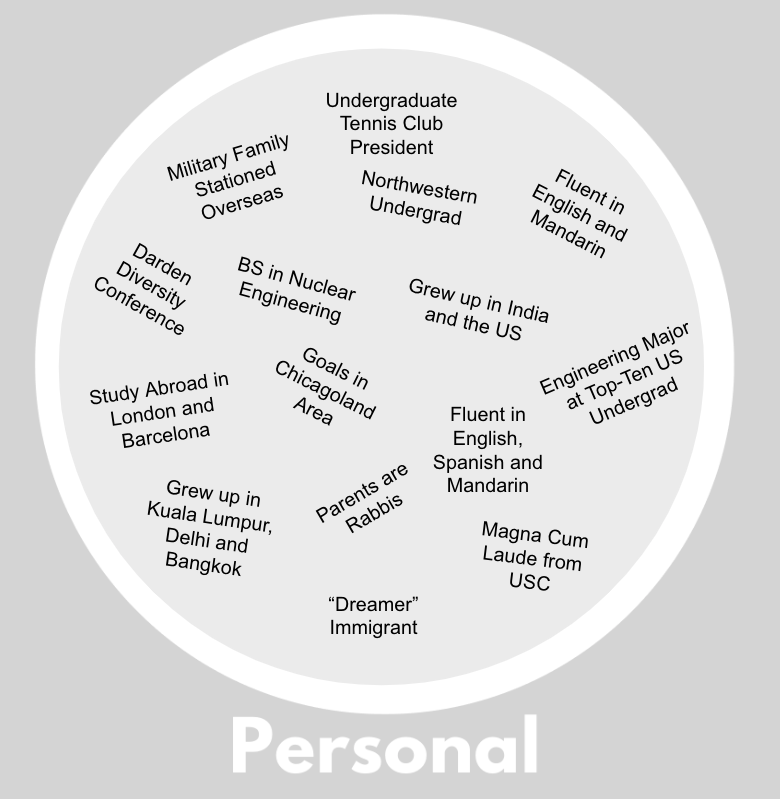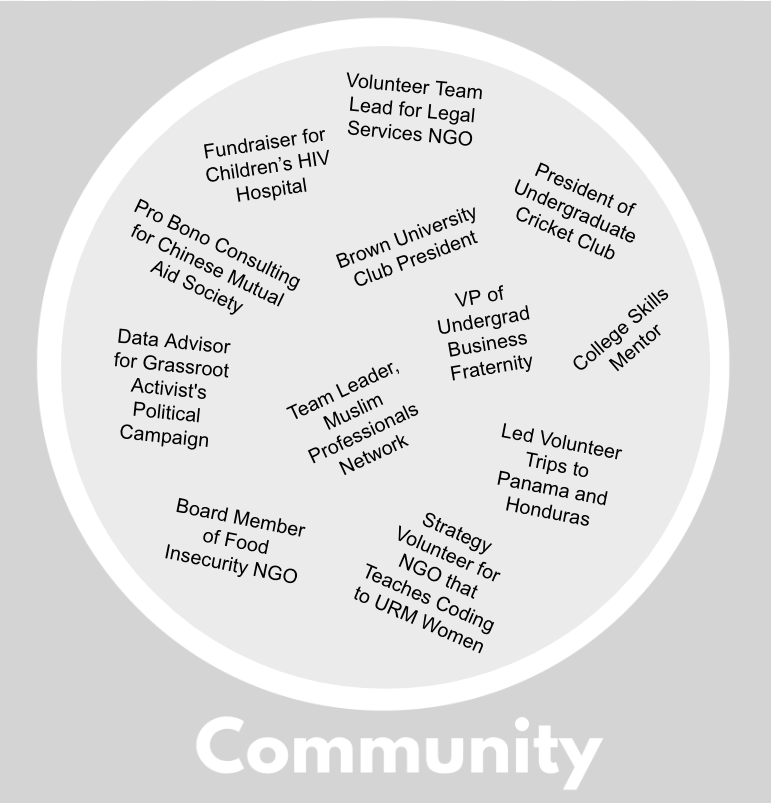Kellogg’s MBA program has a 20% acceptance rate and medium-sized class size, with 550+ students. Women represent almost 50% of Kellogg’s class, a number that has increased almost 10% over the last decade.
Kellogg’s average GMAT hovers around 725-730. With an ever-increasing talent pool, Kellogg’s continually increasing average GMAT reflects the school’s focus on intellectual aptitude. Admissions staff who review applications look for academic ability, professional experience, promotions, impact, and leadership. They also assess applicants’ career focus and leadership, both in the workplace and in the community.
To help demystify Kellogg’s acceptance rate drivers, we evaluated SBC client data from the 2021 – 2022 season. Our findings show that in addition to strong GPA, test cores and work experience, Kellogg appreciates applicants who demonstrate authenticity and demonstrate self-awareness
Our process:
To preserve anonymity for our client pool, we’ve deconstructed each of our client profiles across these criteria:
- Nationality
- Industry
- Employer
- College
- GPA
- Test scores
- Other distinguishing factors
Our consultants have shared client attributes for each of these criteria, and we’ve aggregated the outcomes for Kellogg admits according to personal, extracurricular, and professional domains.
These visuals showcase the kaleidoscope of qualities found in Kellogg admits across a sampling of recent SBC clients.



OVERCOMING THE KELLOGG MBA ACCEPTANCE RATE ODDS
We asked the former Kellogg Business School Admissions Officers on our Stacy Blackman Consulting team, “What does Kellogg Admissions look for?”
The consensus:
Kellogg is looking for candidates who have the “Kellogg DNA” – high impact, low ego learners and leaders. Leadership and a track record of involvement are also prime differentiators for Kellogg, whether at work, during undergrad, or through extracurriculars. Depth of involvement – a long-term committed to one extracurricular activity — or breadth – multiple activities in undergrad — are valued.
We asked these same former Kellogg Admissions Officers, “What does Kellogg Admissions want to avoid?” Their answer:
Every applicant talks about the “people and culture“ being the main draws to Kellogg. Since “culture” is a given, Kellogg Admissions is looking for applicants who go beyond that – citing a particular Kellogg class, professor, experience, opportunity, etc shows applicant has done their research. Building a network and teamwork is fine to relay, but be careful not to talk too much about the “fun” aspect of the experience.
The Kellogg experts on our SBC team added:
The key to Kellogg is its culture. Team-oriented, collaborative, student involvement…these are all ways to accurately describe the very unique culture that is cultivated at Kellogg. While the class is comprised of driven, high achievers and the environment can be very intense, it is not cutthroat-competitive. Kellogg’s unique culture is partially a result of its policy of interviewing all applicants – thus emphasizing the personal aspect of the application, more than almost any other school. This also makes it a very popular choice with recruiters.
Check out our HBS and GSB dual admit study here for more inspiration. And, see Stanford Business School Acceptance Rate, Deconstructed and MIT Sloan Acceptance Rate, Deconstructed.
If you’d like to speak with one of our Principals about your MBA candidacy, please request a free analysis here.
The post Kellogg Acceptance Rate, Deconstructed appeared first on Stacy Blackman Consulting - MBA Admissions Consulting.
